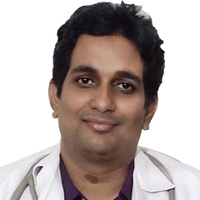Baidyanath Sariwadi Bati (80) Information
Baidyanath Sarivadi Vati is an ayurvedic medicine that is primarily used for the treatment of Ear Disease. Secondary and off-label uses of Baidyanath Sarivadi Vati have also been mentioned below. The key ingredients of Baidyanath Sarivadi Vati are Sariva, Mesua ferrea, Cinnamon, Water lily, Cardamom, Triphala, Abhrak bhasma, Lauh bhasma, Black nightshade, Callicarpa macrophylla. The properties of which have been shared below. The correct dosage of Baidyanath Sarivadi Vati depends on the patient's age, gender, and medical history. This information has been provided in detail in the dosage section.
Ingredients of Baidyanath Sariwadi Bati
| Ananthamoola |
|
| Kushta | |
| Nagkesar |
|
| Cinnamon |
|
| Mahua |
|
| Water lily |
|
| Cardamom |
|
| Triphala |
|
| Abhrak bhasma |
|
| Lauh bhasma |
|
| Makoy (Kakamachi) |
|
| Priyangu |
|
Baidyanath Sariwadi Bati Benefits
Baidyanath Sariwadi Bati is used to treat the following -
Main Benefits
Other Benefits
- Diabetes ( Diabetes Treatment ) (Read More - Ayurvedic Rremedies for Diabetes)
- Fever (Read More - Ayurvedic medicine, treatment and remedies for Fever)
- Heart Disease ( Heart Disease Treatment ) (Read More - Home remedies for heart disease)
- Alcoholism
- Infertility ( Infertility Treatment ) (Read More - Home remedies for female infertility)
- Epilepsy (Read More - Ayurvedic medicine, treatment and remedies for Epilepsy)
Baidyanath Sariwadi Bati Dosage
This is the usual dosage recommended in most common treatment cases. Please remember that every patient and their case is different, so the dosage can be different based on the disease, route of administration, patient's age and medical history.
| Age Group | Dosage |
| Adult |
|
| Geriatric |
|
Baidyanath Sariwadi Bati (80) Side Effects
No side effects of Baidyanath Sariwadi Bati have been reported in the medical literature. However, you should always consult your doctor before using Baidyanath Sariwadi Bati.
How to Take Baidyanath Sariwadi Bati
You can take Baidyanath Sariwadi Bati with following:
-
Can I take Baidyanath Sariwadi Bati with Milk?
Baidyanath Sariwadi Bati may be taken with milk. -
Can I take Baidyanath Sariwadi Bati with LukeWarm Water?
There is no harm in having lukewarm water with Baidyanath Sariwadi Bati.
This medicine data has been created by -

BAMS, Gastroenterology, Dermatology, Psychiatry, Ayurveda, Sexology, Diabetology
10 Years of Experience
References
Ministry of Health and Family Welfare. Department of Ayush: Government of India. [link]. Volume 1. Ghaziabad, India: Pharmacopoeia Commission for Indian Medicine & Homoeopathy; 1986: Page No - 105 - 106
Ministry of Health and Family Welfare. Department of Ayush: Government of India. [link]. Volume 2. Ghaziabad, India: Pharmacopoeia Commission for Indian Medicine & Homoeopathy; 1999: Page No - 125 - 126
Ministry of Health and Family Welfare. Department of Ayush: Government of India. [link]. Volume 1. Ghaziabad, India: Pharmacopoeia Commission for Indian Medicine & Homoeopathy; 1986: Page No - 151 - 152
Ministry of Health and Family Welfare. Department of Ayush: Government of India. [link]. Volume 2. Ghaziabad, India: Pharmacopoeia Commission for Indian Medicine & Homoeopathy; 1999 : Page No 109 - 110
Ministry of Health and Family Welfare. Department of Ayush: Government of India. [link]. Volume 1. Ghaziabad, India: Pharmacopoeia Commission for Indian Medicine & Homoeopathy; 1986: Page No 36-37
Ministry of Health and Family Welfare. Department of Ayush: Government of India. [link]. Volume- IV. Ghaziabad, India: Pharmacopoeia Commission for Indian Medicine & Homoeopathy; 2004: Page No 54-56
Ministry of Health and Family Welfare. Department of Ayush: Government of India. [link]. Volume 2. Ghaziabad, India: Pharmacopoeia Commission for Indian Medicine & Homoeopathy; 1999: Page No 70-73
Ministry of Health and Family Welfare. Department of Ayush: Government of India. [link]. Volume 2. Ghaziabad, India: Pharmacopoeia Commission for Indian Medicine & Homoeopathy; 1999: Page No 151-152
Ministry of Health and Family Welfare. Department of Ayush: Government of India. [link]. Volume 4. Ghaziabad, India: Pharmacopoeia Commission for Indian Medicine & Homoeopathy; 2004: Page No 111-112